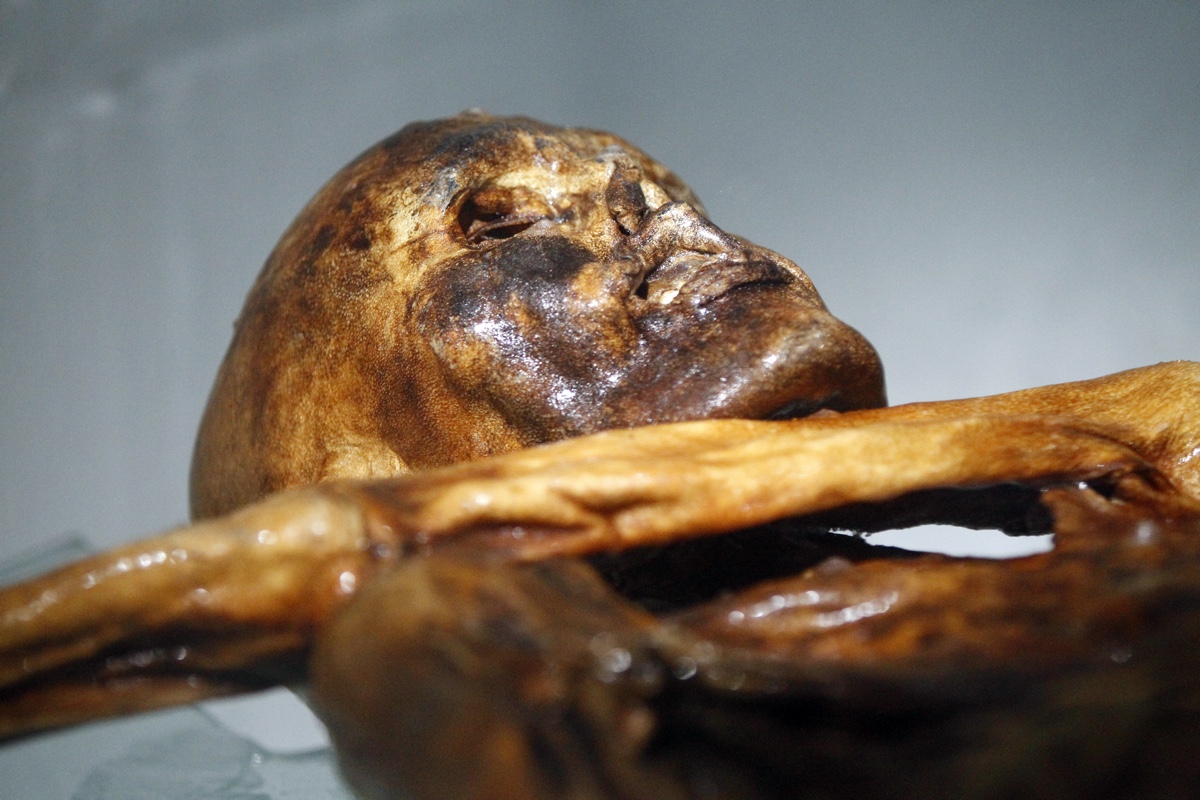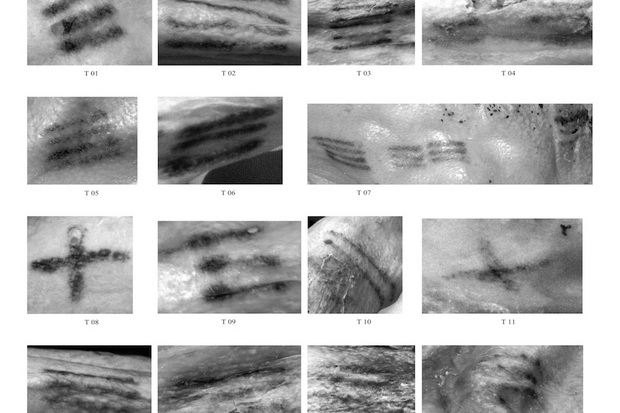
Ötzi the iceman, a spectacularly preserved mummy of a man who was murdered about 5,300 years ago, may have consumed medicinal herbs and had a treatment similar to acupuncture prior to his death, a new study reveals.
"The ancient society of the iceman most likely already had a considerable knowledge about medical treatment. It seems that they used different forms of therapy, including physical treatment and using medical plants. This definitely requires a certain knowledge of the human anatomy as well as how diseases arise and develop," study author Albert Zink, head of the Eurac Research Institute for Mummy Studies in Bolzano, Italy, told Live Science in an email.
Frozen in time
The iceman, the oldest glacier-bound mummy ever discovered, was found by hikers in Italy's Ötztal Alps in 1991, and since then, scientist have scrutinized almost every aspect of the man's life. Genetic analysis revealed that the iceman had a host of ailments at the time of his murder (by a blow to the head). For instance, Ötzi was a heart attack waiting to happen, with narrowed arteries, and he had arthritic knees and rotten teeth, a likely case of Lyme disease, and signs of stomach ulcers, Live Science previously reported. [Mummy Melodrama: Top 9 Facts About Ötzi the Iceman]
In addition, the iceman was inked; Ötzi was covered in 61 tattoos. The tattoos were all simple stripes with two crosses, so they didn't seem to be decorative. Given the look and location of these tattoos, the researchers think the markings were a form of medical treatment.
"The tattoos are all located at body regions where the iceman had some health issues and probably experienced periods of pain. For example, he had degenerative diseases of his hip, knee, ankle joints and lower back. Most of the tattoos are located [on] the legs and the lower back," Zink said.

chest tattoos may have been used to soothe belly discomfort; he had intestinal parasites and a Helicobacter pylori infection. And some of the inked spots corresponded to traditional acupuncture "pressure points," suggesting to some researchers that the iceman underwent a form of acupuncture, Zink said. (Most scientists believe acupuncture first arose in China, and the first written description of it derives from 2,200 years ago, but it could have arisen earlier in some other location, like Europe, Zink said.)
At the time of his death, the iceman had a "medicinal mushroom" known as birch polypore in his digestive system. Birch polypore is thought to have anti-inflammatory and fever-reducing properties, Zink said. Ötzi had also consumed ferns, which could have been either a primitive food wrapper that Ötzi mistakenly ate or a treatment to kill off the parasitic worms that plagued the iceman, Zink said.
Sign up for the Live Science daily newsletter now
Get the world’s most fascinating discoveries delivered straight to your inbox.
The recent findings were published Aug. 8 in the International Journal of Paleopathology.
Originally published on Live Science.

Tia is the managing editor and was previously a senior writer for Live Science. Her work has appeared in Scientific American, Wired.com and other outlets. She holds a master's degree in bioengineering from the University of Washington, a graduate certificate in science writing from UC Santa Cruz and a bachelor's degree in mechanical engineering from the University of Texas at Austin. Tia was part of a team at the Milwaukee Journal Sentinel that published the Empty Cradles series on preterm births, which won multiple awards, including the 2012 Casey Medal for Meritorious Journalism.









